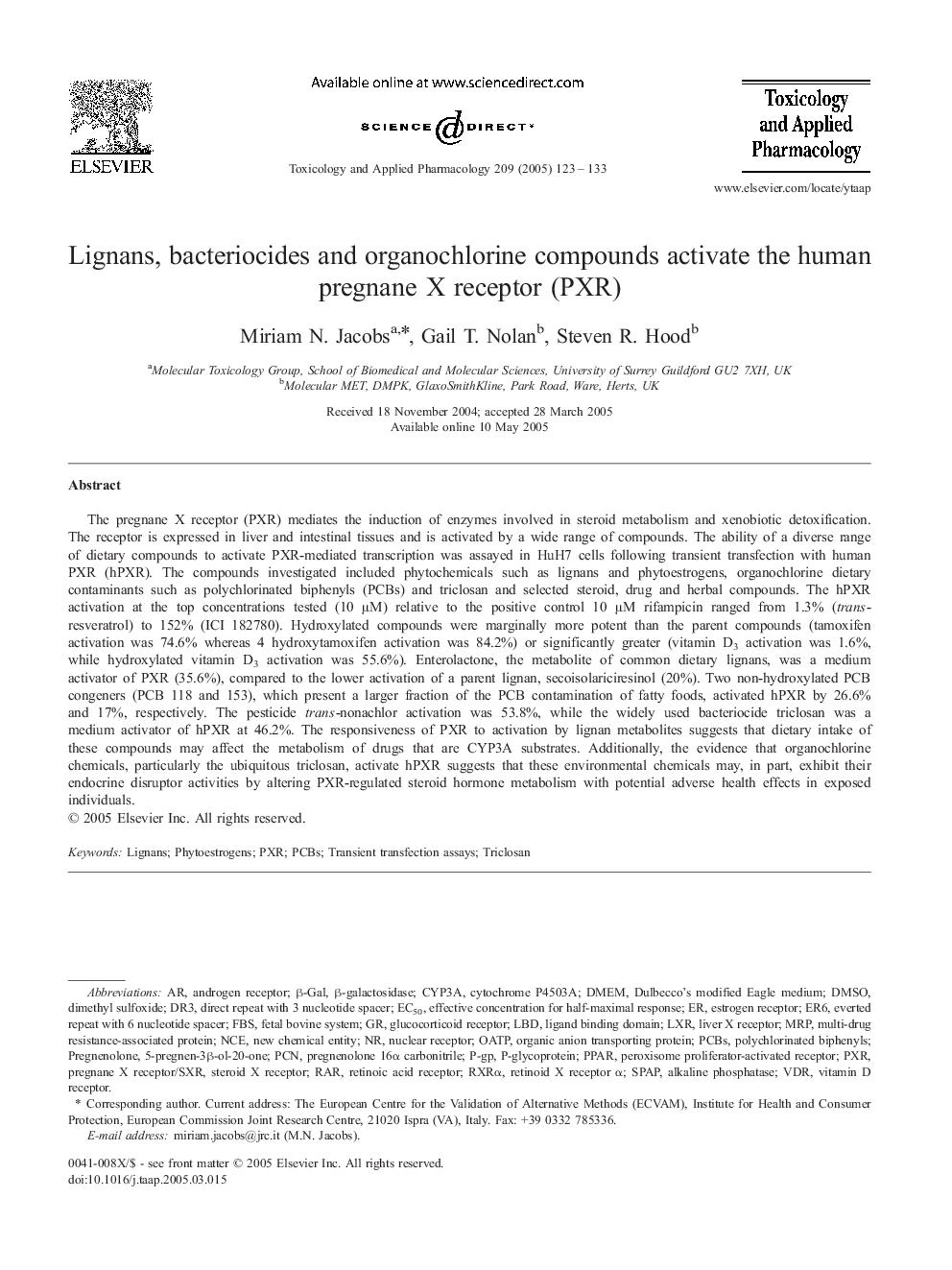| کد مقاله | کد نشریه | سال انتشار | مقاله انگلیسی | نسخه تمام متن |
|---|---|---|---|---|
| 9017916 | 1128677 | 2005 | 11 صفحه PDF | دانلود رایگان |
عنوان انگلیسی مقاله ISI
Lignans, bacteriocides and organochlorine compounds activate the human pregnane X receptor (PXR)
دانلود مقاله + سفارش ترجمه
دانلود مقاله ISI انگلیسی
رایگان برای ایرانیان
کلمات کلیدی
PCNSPAPOATPRetinoid X Receptor αRXRαP-gpPXRRARLXRVDRβ-galMRPDR3CYP3Acytochrome P4503ANCEDMEMEC50LBDPPARPCBsFBSDMSO - DMSODulbecco's modified Eagle Medium - Eagle Medium اصلاح شده DulbeccoP-glycoprotein - P-گلیکوپروتئینAlkaline phosphatase - آلکالین فسفاتاز یا فسفاتاز قلیاییβ-galactosidase - بتا گالاکتوزیدازPolychlorinated biphenyls - بیفنیل پلیکلر Triclosan - تری کلوزانpregnenolone - حاملنولونligand binding domain - دامنه اتصال لیگاندDimethyl sulfoxide - دیمتیل سولفواکسیدphytoestrogens - فیتواستروژن هاLignans - لیگنانnew chemical entity - موجودی شیمیایی جدیدliver X receptor - کبد X گیرندهAndrogen Receptor - گیرنده آندروژنیEstrogen receptor - گیرنده استروژنRetinoic acid receptor - گیرنده اسید رتینوئیکperoxisome proliferator-activated receptor - گیرنده فعال فعال پروکسیومVitamin D receptor - گیرنده ویتامین Dglucocorticoid receptor - گیرنده گلوکوکورتیکوئیدNuclear receptor - گیرنده هستهای، گیرندههای هستهای
موضوعات مرتبط
علوم زیستی و بیوفناوری
علوم محیط زیست
بهداشت، سم شناسی و جهش زایی
پیش نمایش صفحه اول مقاله

چکیده انگلیسی
The pregnane X receptor (PXR) mediates the induction of enzymes involved in steroid metabolism and xenobiotic detoxification. The receptor is expressed in liver and intestinal tissues and is activated by a wide range of compounds. The ability of a diverse range of dietary compounds to activate PXR-mediated transcription was assayed in HuH7 cells following transient transfection with human PXR (hPXR). The compounds investigated included phytochemicals such as lignans and phytoestrogens, organochlorine dietary contaminants such as polychlorinated biphenyls (PCBs) and triclosan and selected steroid, drug and herbal compounds. The hPXR activation at the top concentrations tested (10 μM) relative to the positive control 10 μM rifampicin ranged from 1.3% (trans-resveratrol) to 152% (ICI 182780). Hydroxylated compounds were marginally more potent than the parent compounds (tamoxifen activation was 74.6% whereas 4 hydroxytamoxifen activation was 84.2%) or significantly greater (vitamin D3 activation was 1.6%, while hydroxylated vitamin D3 activation was 55.6%). Enterolactone, the metabolite of common dietary lignans, was a medium activator of PXR (35.6%), compared to the lower activation of a parent lignan, secoisolariciresinol (20%). Two non-hydroxylated PCB congeners (PCB 118 and 153), which present a larger fraction of the PCB contamination of fatty foods, activated hPXR by 26.6% and 17%, respectively. The pesticide trans-nonachlor activation was 53.8%, while the widely used bacteriocide triclosan was a medium activator of hPXR at 46.2%. The responsiveness of PXR to activation by lignan metabolites suggests that dietary intake of these compounds may affect the metabolism of drugs that are CYP3A substrates. Additionally, the evidence that organochlorine chemicals, particularly the ubiquitous triclosan, activate hPXR suggests that these environmental chemicals may, in part, exhibit their endocrine disruptor activities by altering PXR-regulated steroid hormone metabolism with potential adverse health effects in exposed individuals.
ناشر
Database: Elsevier - ScienceDirect (ساینس دایرکت)
Journal: Toxicology and Applied Pharmacology - Volume 209, Issue 2, 1 December 2005, Pages 123-133
Journal: Toxicology and Applied Pharmacology - Volume 209, Issue 2, 1 December 2005, Pages 123-133
نویسندگان
Miriam N. Jacobs, Gail T. Nolan, Steven R. Hood,